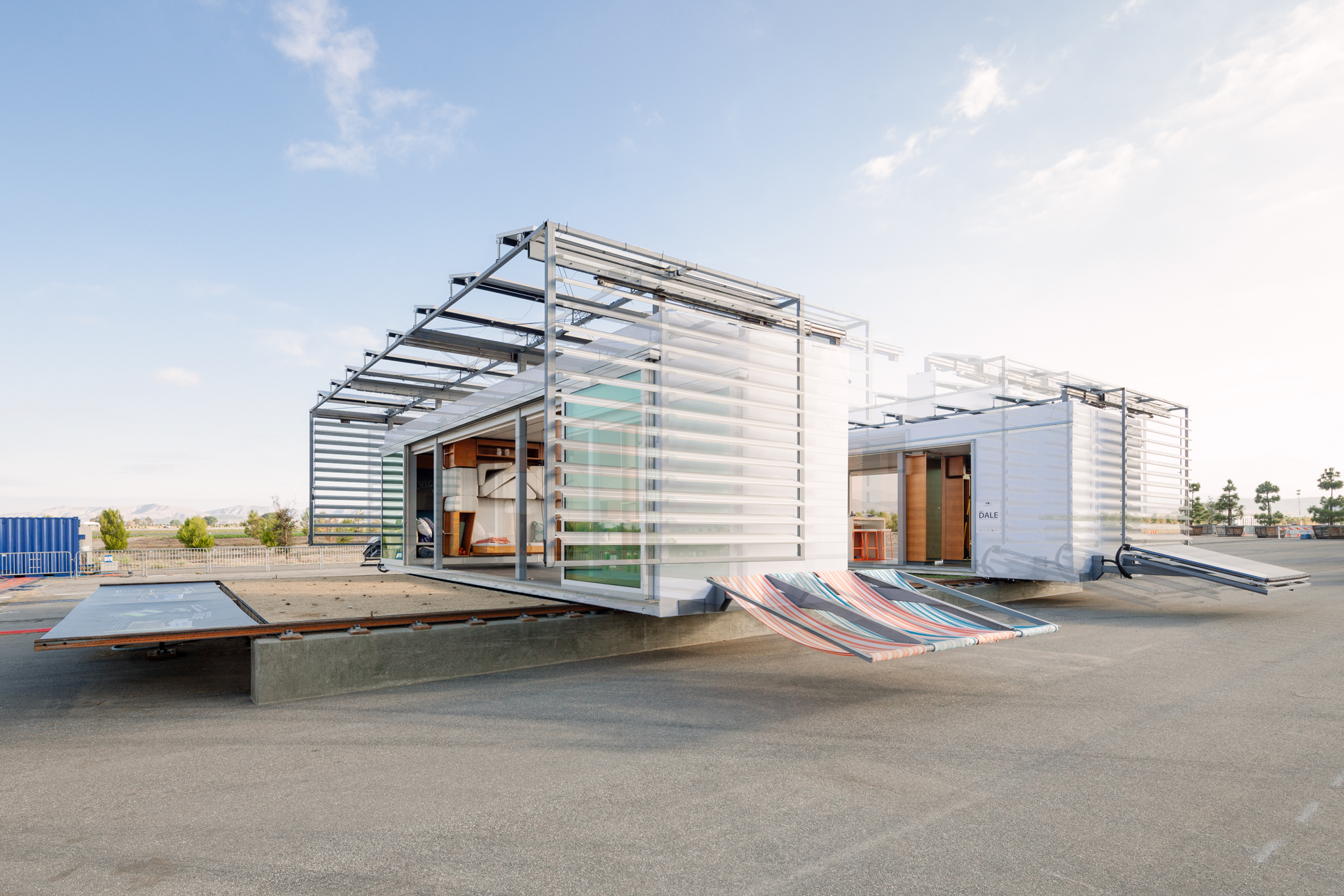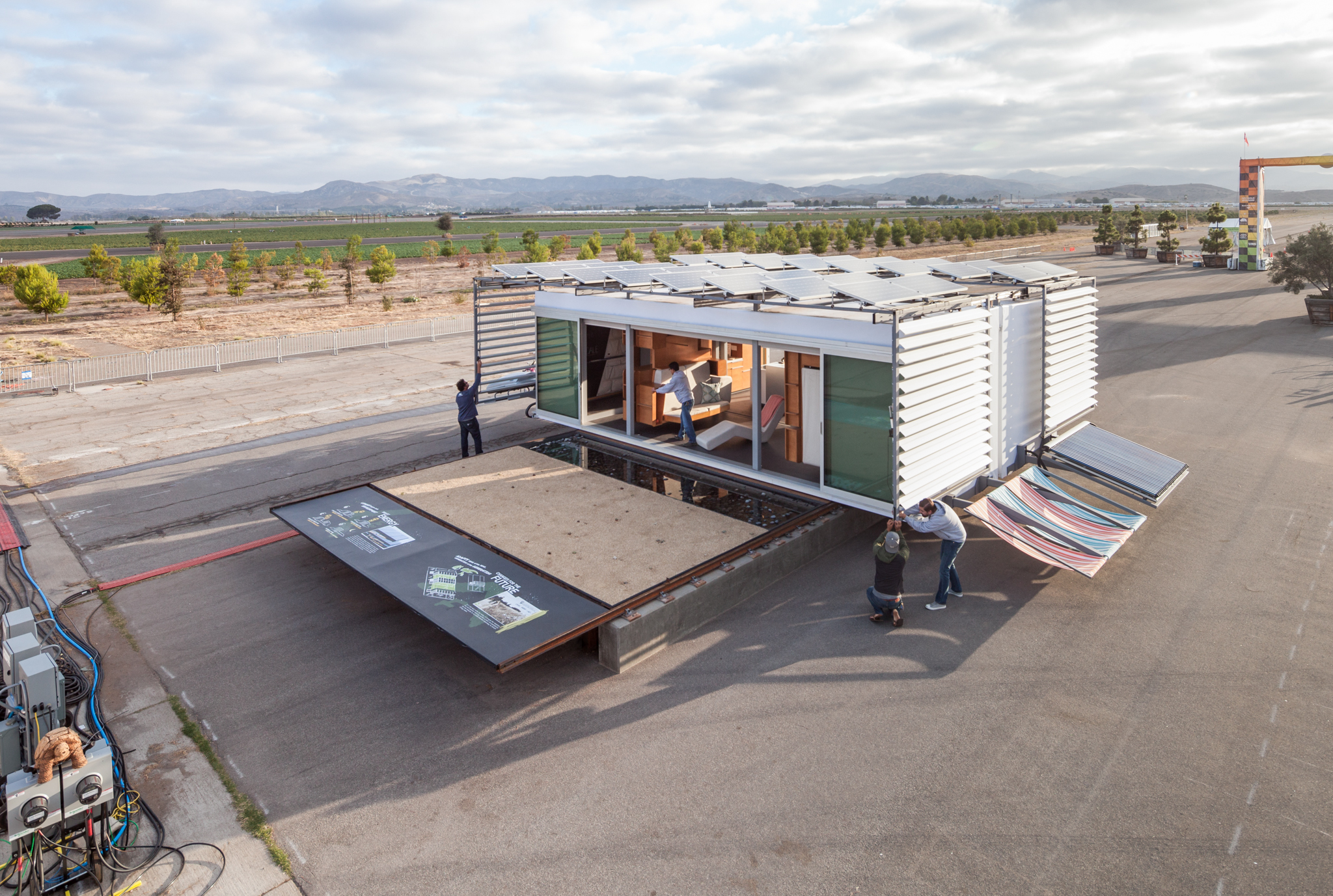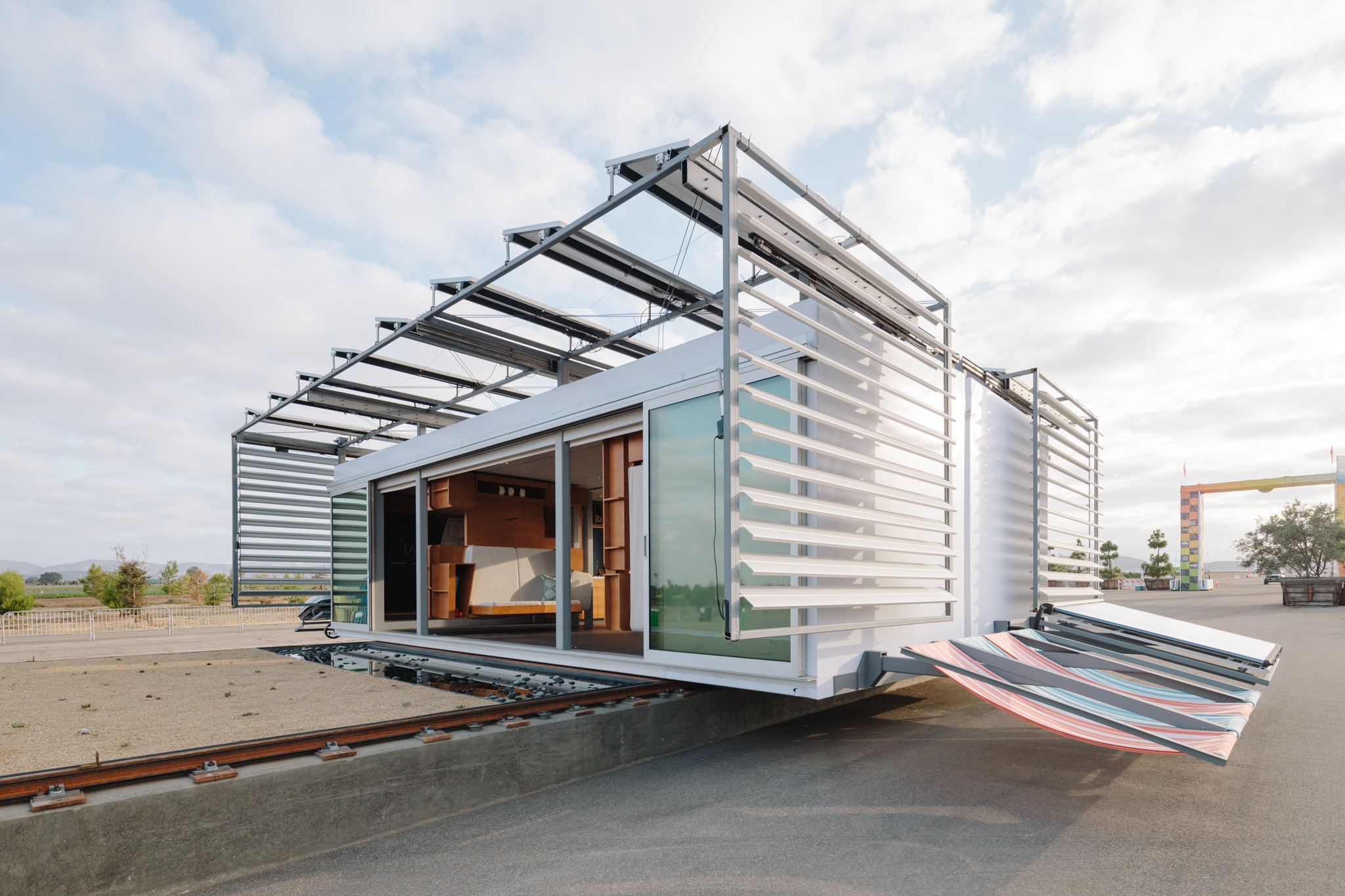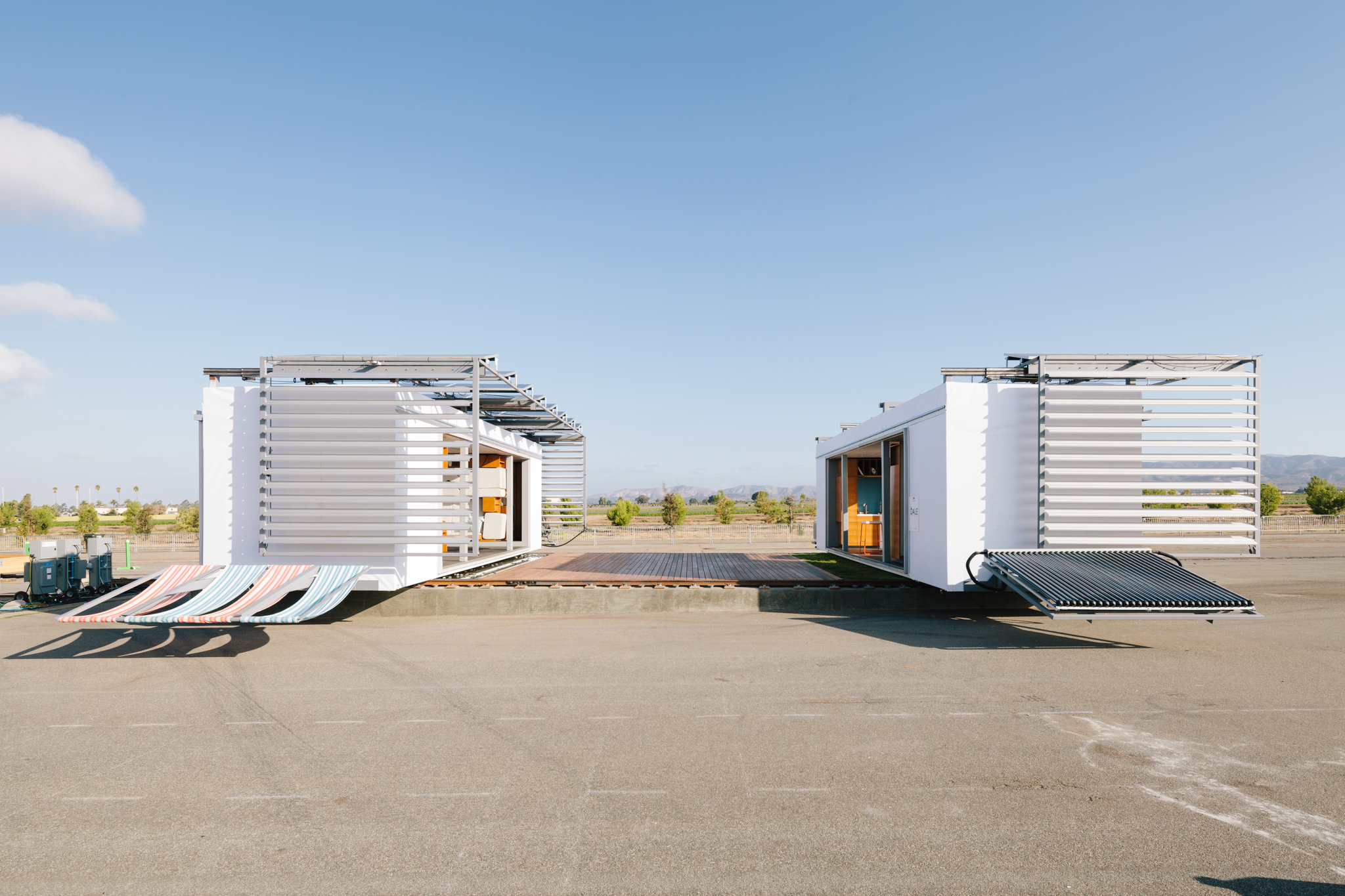DALE
DALE, which stands for Dynamic Augmented Living Environment, proposes a completely new approach to sustainability and includes many other engineering and design breakthroughs that ensure its energy usage is optimized. At 600 square feet, DALE is a micro house with an unprecedented flexible interior allowing it to transform into a home three times its size, demonstrating not only size variability, but also breakthrough advances in programmatic flexibility.
Its two independent modules sit on a rail system that provides the option to expand and contract the home in order to react to climate changes, as well as take into account lifestyle needs. When the modules are spaced apart, a mid-yard is created that expands the living space and allows occupants to take advantage of California’s sublime climate. DALE’s sliding overhangs allow for additional configurations providing shading and privacy where needed. When an expansive living space is not needed, or when the night climate becomes cold, DALE’s modules come together, seal and require minimal energy to power the home, maximizing efficiency with a small footprint. The home also produces more energy than it consumes, so that it can exist off the grid.
By moving along its rail system and opening up to nature, DALE expands into the environment, being at the same time small and spacious, and efficient and expansive. Its range of motion for the competition prototype is 54 feet, meaning the home’s square footage can grow from 600 to nearly 1,800 feet. In the real world, beyond the decathlon competition, the home can exist either on a standard suburban lot, or on a large expanse of land where the system can, in theory, be added to, resulting in much more variation.
The Solar Decathlon is a unique program that is student driven: students design, build, engineer and fundraise for the project. Expert support is provided through working closely with corporate partners to ensure the project’s success. Some examples of such mentorship are the architectural students collaborating with structural engineers at Buro Happold to ensure the house was structurally sound, and the engineering students meeting with logic controller specialists, the CTO of Control4, and a member of JPL’s Space Architecture team. Through the completion of the project, students worked closely with Southern California Edison’s emerging technologies program to gain a better understanding of DALE’s performance and how it can benefit the general public.
In fall 2013, solar decathletes showcased their solar-powered homes at the competition’s new Orange County location, highlighting renewable energy systems and energy-efficient technologies, products and appliances.




